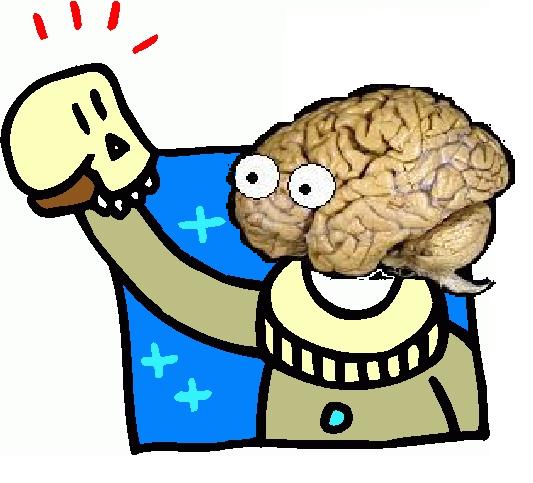Neuroscience to Help Astronauts in Spaceflight
Have you ever wondered what it feels like to return to Earth after flying around in space? Until now, astronauts in training wondered the same thing.
Upon returning to Earth after spaceflight, astronauts may experience neurological symptoms such as dizziness and loss of balance. In the past, scientists had no way to replicate these symptoms during simulation landings. This raised a concern that although astronauts were capable of landing a spacecraft under normal neurological conditions, they may not be able to with impaired sensory and mobility signals.
Dr. Steven Moore at the Mount Sinai School of Medicine in New York developed a tool to solve this problem. The Galvanic Vestibular Stimulation (GVS) system induces sensory and motor disturbances that safely replicate the sensations astronauts experience upon returning to Earth’s atmosphere. This is accomplished by delivering small amounts of electrical simulation to the vestibular nerve of the ear.
To test the effects of GVS, twelve subjects, including NASA and air force pilots, performed simulation landings both with and without stimulation. It was found that landings while under stimulation were outside of the optimal performance range more frequently than those performed under normal conditions. The creators of GVS were happy with this result because it accurately mimicked the effects that occur while returning to Earth.
Not only can NASA benefit from this technology, but military pilots can as well. For the full story, click here.
William’s Syndrome and Autism: Two Extremes on the Social Spectrum
Are you an extravert or an introvert? It is likely that if you have not been asked this directly, you have been tempted into the bi-categorical systemization in the privacy of your internal self-judgment. These two prototypes which show some truth in the extremes of human sociability are represented in the symptoms of William’s Syndrome and Autism. Recent studies focusing on the contrasting linguistic abilities associated with either disorder illumined a correlation between linguistic aptitude and sociability (consequently also drawing a correlation between linguistic ineptitude and unsociability).
The symptoms of the two disorders oppose one another all the way down the line. Meet Peter. Peter harbors no hostilities towards others. In fact, he feels quite indifferent around others, perhaps, moderately uncomfortable. He has little to say, unless the topic falls on one of his oddly specific hobbies. The conversation then bounces from one piece of chit chat, gossip, and light anecdote to another with erratic playfulness. Peter doesn’t disapprove of anything said; he simply finds no need to comment. He observes it with a disinterested blankness, so that the look on his face could not tell one way or another as to his affect or comprehension.
He sees a Rubik’s cube on a shelf nearby, which is of far more fascination to him. He observes people blankly, but objects illumine his eyes like one experiencing spiritual reverie. He finishes the puzzle in less than a minute. He perks up only when the conversation touches upon the esoteric topic of the impossible last problem on the physics exam, which he explains with enthusiasm on the spot, mostly looking at the room, rather than people’s faces. He mumbles as if there were no audience. Peter exemplifies the Autistic persona. Characteristics vary on a spectrum, but key qualities are depreciated response to social cues, greater fascination with objects than people, standoffishness, high spatial or mathematical ability, and a tendency toward the literal, rather than the conceptual.

Now meet William. When presented with Peter’s Rubik cube he strains with it for a few moments before abandoning it completely to study Peter’s face. He watches with delight as Peter’s eyes move to the floor to avoid his gaze, but William stares with unbreakable solidity at Peter’s eyes. William could hardly begin to solve the physics problem Peter was just explaining, but he narrates the events of the test day with incredible fluidity. He rejoices at his ready audience and speaks unrestrainedly as one would only to a friend, though they are all total strangers.
William exemplifies the syndrome he is named after in his lack of social reservation, high responsiveness to facial emotionality, linguistic capability, and low spatial intelligence going hand in hand with his poor IQ test performance. Approximately one in 10,000 people have this disorder, which is the result of a genetic deletion leading to an altered amygdala structure (an area of the brain highly involved in social and emotional processes). Those with William’s syndrome demonstrate higher than normal reactions on brain scans to happy facial expressions and lower than normal ones to unhappy ones, suggesting a cause for their extreme extroversion. Those with autism express a lower than normal reaction to positive facial expression. However, William's syndrome is attributable to a particular genetic deletion, while autism exhibits more variance.
The extreme contrast between these two disorders led to an investigation in the differing mechanisms of language processing in the brains of individuals with either disorder to find a correlation between linguistic aptness and sociability. Inna Fishman and Debra Mills focused on the so named N400 pattern of electrical brain activity, measured through electrodes on the scalp. The N400 is part of a normal brain response to words and meaningful stimuli that peaks 400 milliseconds after the stimulus. Participants were given odd sentences such as “I take my coffee with sugar and shoes.” Those with WS had an abnormally high response in comparison to the control, while those with autism did not show such negativity, demonstrating an inability to integrate lexical information into an overall conceptual context. This demonstrates that those with autism have difficulty with non-literal or conceptual meaning.
Comparing with preliminary data, there was a direct correlation between level of sociability and N400 response. The study revealed a connection between the degree of social aptitude and linguistic ability. It seems likely that depreciated language ability would be related to social ineptitude. However, the complexity of what makes one socially apt and what makes one withdrawn reaches a greater level of depth than the exposed correlation. Nonetheless, the juxtaposition of these two social extremes is a fascination in itself, and study often wins merit not by grasping truth in its entirety, but by probing it.
Language as a Window into Sociability
Science Daily Article
Sociability Traced to Particular Region of Brain Science Daily on William's Syndrome
Replacing Neurons
![]()
Imagine: a mad scientist with a ray gun shoots at a neuron somewhere in cortical layer IV of your visual area MT, burning it up in a matter of microseconds (just for fun, imagine also that the ray gun leaves everything else intact).
With one neuron missing, you probably won't notice any perceptual change. But what if, one by one, all neurons in are MT went AWOL? You'd be stuck with an annoying inability to visually detect motion.
Now imagine that for every cell that our fancy ray gun hits, it replaces it with a magical transistor equivalent. These magical transistors have wires in place of each and every dendrite, a processing core, and some wires in place of axon(s). Naturally, the computational core analyzes the sum of all inputs and instructs the axon to "fire" accordingly. Given any set of inputs to the dendrite wires, the output of the axon wires is indistinguishable from that of the deceased neuron.
We can still imagine that with one neuron replaced with one magical transistor, there wouldn't be any perceptual change. But what happens when more and more cells are replaced with transistors? Does perception change? Will our subject become blind to motion, as if area MT weren't there? Or will motion detection be just as good as with the real neurons? I am tempted to vote in favor of "No change [we can believe in]," but have to remain skeptical: there is simply no direct evidence for either stance.

Ray guns aside, it is not hard to see that a computational model of a brain circuit may be a candidate replacement of real brain parts (this is especially true considering the computational success of the Blue Brain Project's cortical column, which comprises 10,000 neurons and many more connections among them). For example, we can imagine thousands of electrodes in place of inputs to area MT that connect to a computer model (instead of to MT neurons); the model's outputs are then connected, via other electrodes, to the real MT's outputs, and ta-da! Not so fast. This version of the upgrade doesn't shed any more light on the problem than the first, but it does raise some questions: do the neurons in a circuit have to be connected in one specific way in order for the circuit to support perception? Or is it sufficient simply for the outputs of the substitute to match those of the real circuit, given any set of inputs? And, what if the whole brain were replaced with something that produced the same outputs (i.e. behavior) given a set of sensory inputs - would that "brain" still produce perception?
Subconscious Security: Our Next Big Life Investment?
Have you seen the hit summer movie, Inception, yet? If not, I recommend you to, because it’s mind bottling (Yeah,  Anchorman’s Ron Burgundy would approve). Either way though, seen it or not, the movie tweaked my curiosity about the ever-growing interaction between technology and our brains, our minds.
Anchorman’s Ron Burgundy would approve). Either way though, seen it or not, the movie tweaked my curiosity about the ever-growing interaction between technology and our brains, our minds.
In the movie, Leonardo DiCaprio’s character, Cobb, is on a mission to plant an idea into another character's mind in order to safely, legally, go home to his kids.
Cobb and his colleagues use a PASIV (Portable Automated Somnacin IntraVenous) device to access the target’s mind while he is sleeping on an airplane.
U nfortunately for Cobb’s team, the target’s mind has what Cobb calls “subconscious security,” trained mental "projections" set up in his mind to protect it from intruders. To implant the idea, they have to find a way around this security, but how? Will they make it? The movie’s a must-see – watch and find out!
nfortunately for Cobb’s team, the target’s mind has what Cobb calls “subconscious security,” trained mental "projections" set up in his mind to protect it from intruders. To implant the idea, they have to find a way around this security, but how? Will they make it? The movie’s a must-see – watch and find out!
So, how is this far-off movie-world of inception, dream-sharing, and mind-reading relevant, or worthy of discussion at present?
Well, haven’t fMRI results been cluing us in on some of our emotions, conscious or not? In my last post, I discussed how one’s level of empathy correlates with the activity of the ACC (anterior cingulate cortex) as recorded by an fMRI. Whether lab volunteers knew it or not, they (their brains, really) reacted more actively to the pain of those similar to them.
And now, with the rapid succession of advancements in brain-imaging technology, mind-reading and even dream-recording does not seem so unrealistic. “Subconscious security” might actually come in handy if our privacy becomes too vulnerable.
Recent articles (one and two) discuss how researchers at Northwestern University have discovered technology that can be used to “get inside the mind of a terrorist.” In their experiment, they created a mock terror-attack plan with details known and memorized only by some lab participants. The researchers found a correlation between the participants' P300 brain waves and their guilty knowledge with “100 percent accuracy,” as J.P. Rosenfeld says.
Measuring the waves using electrodes attached to the participants' scalps, they were able to determine whether they had prior knowledge of, or strong familiarity with, certain dates, places, times, etc.
While TIME writer Eben Harrell notes the threat this type of experiment has on privacy and its clear limitations (“confounding factors” such as familiarity, not because of guilty knowledge but of fond memories, i.e. a hometown), he also notes that interrogations can be more detrimental than these experiments. Accuracy can be improved upon simply by presenting more details to participants.
In her 2008 article, Celeste Biever tells readers how scientists, particularly Yukiyasi Kamitani and his colleagues, have come to analyze brain scans and reconstruct images the lab volunteers had seen in their mind. The scientists believe their work has potential to improve reconstructions to finer focus and even color.
John-Dylan Haynes of the Max Planck Institute in Germany, referred to in Biever’s article, says that the “next step is to find out if it is possible to image things that people are thinking of.” He even considers the possibility of making “a videotape of a dream” in the near future.
However, as Berns points out in an August 2010 article written by Graham Lawton and Clare Wilson, ethical issues  would likely be raised if this brain-imaging technology begins to bind too intimately with advertising and marketing companies. People would probably feel uncomfortable if advertising becomes too knowledgeable of the workings of their minds, perhaps even enticing them to buy things they “don’t want, don’t need, and can’t afford.”
would likely be raised if this brain-imaging technology begins to bind too intimately with advertising and marketing companies. People would probably feel uncomfortable if advertising becomes too knowledgeable of the workings of their minds, perhaps even enticing them to buy things they “don’t want, don’t need, and can’t afford.”
For now though, the advertising approaches using this technology seem innocent enough. With EEG machines, advertisers can determine which designs, words, or advertisements receive certain patterns of brain activity – in other words, receive the most attention from potential buyers.
Not only have EEG machines been used by advertisers, but also by sales companies – for both purposes inspiring and not so inspiring. Starting with the latter, some companies (i.e., Mattel, Emotiv) have sold cheap EEG devices to “mainstream consumers,” particularly gamers. One Californian company, NeuroSky, has built an emotion-detecting device, determining, per se, whether one is relaxed or anxious.
While not completely necessary or inspiring, devices like these are fascinating. I’d like to see what some device thinks I’m feeling, and how accurate it is.
Fortunately, there are inspiring purposes for these EEG devices. As discussed by Tom Simonite in his April 2009 article, those with disabilities or paralysis can use the devices to help control wheel chairs and even type on a computer. One engineer, Adam Wilson, even updated his Twitter using one of these systems (BCI2000): “USING EEG TO SEND TWEET.”
Not only can EEG devices help those with disabilities or paralysis, but prosthetic limbs can also. Professors at the Friedrich Schiller University of Jena, Weiss and Hofmann, discuss in their article that one of their systems allows the brain to “pick up…feedback from the prosthesis as if it was one’s own hand,” easing phantom pain.
DARPA (Defense Advanced Research Projects Agency) has allowed prostheses to advance even more than this, aspiring to bring back to wearers the experience of touch. They awarded The Johns Hopkins University Applied Physics Laboratory (APL) over $30 million to "manage and test the Modular Prosthetic Limb (MPL)," which would  use a "brain-controlled interface" to perform desired actions.
use a "brain-controlled interface" to perform desired actions.
Despite the hurdles along the way (as noted by Andew Nusca in his blog), the lab has released a final design, as described in a reprinted online article. It offers an amazing 22 degrees of motion, weighs the average nine-pound weight of a natural limb and responds to the wearer’s thoughts.
While the blooming relationship between technology and the brain has raised ethical questions about privacy and its use, it has also brought hope and awe to people. Maybe, with the seeming innocence of neuro-marketing thus far and the hope inspired by research and development, we won't need to turn to “subconscious security” just yet.
Sources:
Reading Terrorists Minds About Imminent Attack: Brain Waves Correlate to Guilty Knowledge in Mock Terrorism Scenarios – Science Daily (reprint)
Fighting Crime by Reading Minds – Eben Harrell of TIME
'Mind-reading' software could record your dreams – Celeste Biever of New Scientist
Visual Image Reconstruction from Human Brain Activity using a Combination of Multiscale Local Image Decoders – Kamitani, et. al of Neuron
Mind-reading marketers have ways of making you buy – Graham Lawton and Clare Wilson of New Scientist
Mind-reading headsets will change your brain – Tom Simonite of New Scientist
Prosthesis with information at its fingertips – Weiss and Hofmann of FS University of Jena
DARPA aims to control prosthetic limbs with brain implants – Andrew Nusca of Smart Planet
Thought Control of Prosthetic Limbs Funded by DARPA – Neuroscience News (reprint)
Turns out, size doesn't matter.
![]()
"What's so special about the human brain? It turns out that we're no better endowed between the ears than you would expect for a primate of our size."
To see how Suzana Herculano-Houzel thwarted the conventional correlation of brain size to intelligence, read more here.
Light-Up Brains
Studying neurological disorders and identifying the brain regions associated with them often involves selective activation and deactivation of neurons. Blue light has been used in the past to activate cells, but recently Stanford University neuroscientists have figured out a way to use different colors of light to inhibit neurons. Their growing area of research, optogenetics, involves the engineering of viruses that insert genetic coding for light-sensitive proteins into cells of interest.
In the 2 April 2010 issue of Cell, Karl Deisseroth and his colleagues at Stanford published a study demonstrating the use of near-infrared wavelengths in neuron inhibition. Infrared light, being at a higher wavelength than blue light, delivers less energy to tissues and is safe at low power. Its ability to reach deeper brain regions, and thus cover more volume, is useful in in-vivo experiments. Additionally, using different colors of light to alter the activity of different brain regions at the same time could provide some answers as to how changes in various regions work in conjunction with each other to cause neurological problems. Optogenetic technology is already being used in research to study motor control, reward, addiction and other neuropsychiatric disorders.
Switching brain cells on and off using multicolored light - Marie Freebody
Molecular and Cellular Approaches for Diversifying and Extending Optogenetics - Article in Cell
The Brain Game: Frolick in the cerebellum, outwit nanobots in the brainstem, puzzle together memories in the hippocampus…
Neuromatrix
You are a secret agent infiltrating a top-secret neuroscience research facility. Your mission: to track down and root out the Nanobots that have invaded the brains of the scientists there. If you fail, the Nanobots and the secret entity that spawned them will take over the Earth, reprogramming the human brain into docile submission.
This game is created by Morphonix.
This may not interest everybody, but the video-game-nerd/preschool-teacher in me was embarrassingly excited to stumble upon this site. The research staff at Morphonix really focus on the idea that they want to design their game to promote learning ABOUT the mind. The three games available are Every Body Has a Brain for ages 4-6, Journey Into the Brain, an award winning game for children ages 7-11, and a real-time 3D game for 11-14 year-olds called Neuromatrix. The graphics may make this game look a little lame to us, but to a kid, adventure is at their fingertips.
If anyone has a little sibling or younger cousin, it is glaringly obvious that kids love to ask questions, and they really do love knowledge and the ability to be a know-it-all at the dinner table. It seems that Morphonix has found a great way to make both the scientific facts of neuroscience and the abstract concepts of the brain extremely accessible, concrete, and inherently fun. Even as a college student, I’d be interested in running through the puzzles, testing what I know, and pretending it counts as studying for my brain anatomy exam.
Each of the games introduces the structure and function of the brain. They maintain real vocabulary, challenging children with difficult words like “hippocampus” while giving them child-oriented strategies to learn what it looks like, where it is, and what it does. But more importantly, it gives them the desire to want to remember the hippocampus - because they learn that they have one! As the Morphonix team states on their site, “We hope that Neuromatrix, Journey into the Brain, and Every Body Has a Brain awaken children and teens to the miracle and wonder of their own growing brains, inspire them to take good care of their brains, and nourish their curiosity about the realm of biology as a whole.”
I think developing games that teach children about Neuroscience is an incredible idea. It is an endlessly intriguing field full of things that affect us everyday but seem intangible to most. Children often ask questions about those things, and Morphonix knows how to give the answer in a way that they will understand and that will stick with them. Honestly, I think one of the 12 year olds would probably fair pretty well in PS 101.
Teaching children about the brain and introducing them to the mysterious field of neuroscience gives something powerful to kids wanting to learn, teachers looking to intrigue and inspire, and even scientists seeking new ways to get the information out there (or start training lab assistants early). An excerpt from the Reviews page of the Morphonix site gives us a pretty good idea of just how inspiring this game can be:
"When Aidan finished playing, Littman sought additional feedback from her pint-sized adviser.
"Where is your heart?" she asked. Aidan pointed to his chest.
"Does your heart think?" He shook his head.
"What keeps the heart beating?"
"The brain stem!" he replied, nearly leaping off the couch with a level of excitement about neuroscience rarely seen in a 5-year-old.
Reading Good for You
Research has shown that reading stimulates white matter growth, improves memory, and in general makes you smarter. If you think any of those things are good for you, visit Project Gutenburg, a collection of thousands of free e-books.
Disclaimer: reading is not intended to cure any disease. Consult your physician before engaging in excessive reading. Side effects include nerdiness, myopia, and know-it-all syndrome.
I, Rudimentary Intelligence
Recent reports of artificial life forms which have "evolved" a basic form of intelligence have caused quite a stir in the biological and computer science communities.
This would normally be the time when I remind everyone that closer scrutiny must be paid to just what is meant by "life", "evolve" and "intelligence". But while those are all fascinating philosophical questions, there is no way in which a modest little blog post could begin to cover those topics. 
Instead, I'd like to draw attention to a particular aspect of Isaac Asimov's writing, of which I can't help being reminded after reading these reports. As the father of the term "robotics" and all things relating to it, Asimov dealt with nearly all of the issues relating to artificial intelligence. A few of his fictional robot characters even developed human-like, self-aware consciousness and creativity. But the one thing which stands out about these characters was that their consciousness was rarely a design of their creators, but rather a fluke. Minute variations in the mechanized construction of their positronic brains amounted to unique, creative minds.
Asimov's choice to author conscious robots as results of random chance forces us to think about how human consciousness evolved in reality. It may be that such a consciousness is not strictly required for an organism to dramatically enhance its chances of survival and reproduction. We seem to assume that our superior cognitive abilities grant us an enormous advantage over other species, that the sort of consciousness which makes us self-aware, reflective and creative was the "end result" in a very long line of brain development. But evolution does not work towards such a specific end. There are plenty of other species (e.g. viruses) that persist with just as much vigor as us, despite their lack of cognitive powers associated with the forebrain. Perhaps only a minor, random mutation resulted in a dramatic and permanent change in the brain, a change which ultimately amounted to consciousness. Who knows what the odds are that such an intelligence evolved, or will evolve again in a computer simulation? At least we can be reassured that, on a long enough time scale, even the most unlikely event can occur.
In any case, Boston University's own Isaac Asimov has made many a prediction with his science fiction, and many more can be expected.
"Artificial life forms evolve basic intelligence"-Catherine Brahic
“Could I ask everyone to please take their seat? The Memory Ensemble will begin momentarily.”

If I told you that a theater company and a medical school collaborated to produce one of the best plays of the year, would you believe me?
Probably not, because this is not the case. However, this unlikely partnership of industries did produce a substantial therapeutic program for people who are currently suffering the cognitive deficits associated with dementia.
Based on the theory of cognitive reserve - or the brain’s resilience to neuropathological damage - it is widely hypothesized that creative and interactive activities, such as painting, singing, and acting, would help patients maintain their cognitive functions for as long as possible.
With this hypothesis and the guidance of the Lookingglass Theater Company, the Feinberg School of Medicine at Northwestern University formed the first-ever "Memory Ensemble." The cast included six elderly patients suffering from early stages of memory loss, a common symptom attributable to various types of dementia.
Quoted as “one of the first-of-its-kind," the directors of this production sought to design a program that would improve the quality of life for these patients by setting up a safe and supportive environment. With the serene scene set, patients were encouraged to express every emotion and/or words associated with their neurological deficits to help them alleviate any pains or questions of uncertainty accompanied by these disorders.
As a part of a seven week pilot study, the ensemble would meet and participate in various cognitive activities, including an impromptu-style of acting that actively engaged the patients both physically and mentally. As a baseline measure, metaphor-based warm-up exercises prompted the patients to choose a color that symbolizes their current emotional state. Prior to their regularly scheduled regime, the patient’s reports ranged from a happy sunny yellow to a melancholy blue. Nevertheless, after a stretching routine, body-sculpting exercises portraying various feelings, and an active discussion of the hardships involved with their disorders, all of the patients were quick to describe their emotional state at the end of the workshop as a happy yellow.
Although these patients verbally reported an improvement in their quality of life within the given time period, it was noted that this qualitative research study could not quantitatively provide evidence in support of their hypothesis. Thus, a lack of evidence from this study could be detrimental to implementing this therapeutic program in hospitals across the US simply because of the lack of funding.
Though not discussed in this article, pre- and post-study fMRI scans and intermittent neuropsychological tests could provide quantitative insight on whether or not such a therapeutic program significantly contributes to the patient’s cognitive reserve. Pre- and post-study fMRI scans of the patients performing these neuropsychological tests can be compared to control subjects, as well as across-patients and within-patients, in order to identify the statistical differences between the patterns of activity associated with each task. Other measures, such as reaction time, can also be recorded to correlate with the patients behavioral performance to provide more information and insight on whether or not this is an effective prevention program.
Despite this predicament, I must say that I am very impressed and optimistic about this new style of therapy because it helps the patient positively cope with such a disastrous and unfortunate mental disorder. In the future, I hope that quantitative measures, as discussed before, will be implemented to help facilitate and disambiguate the uncertainty pertaining to dementia-related research.
Trying Improv as Therapy for Those with Memory Loss - Chicago News Cooperative - NYTimes.com
Cognitive Reserve - Dr. Yaakov Stern (2009) - Neuropsychologia (PDF)
